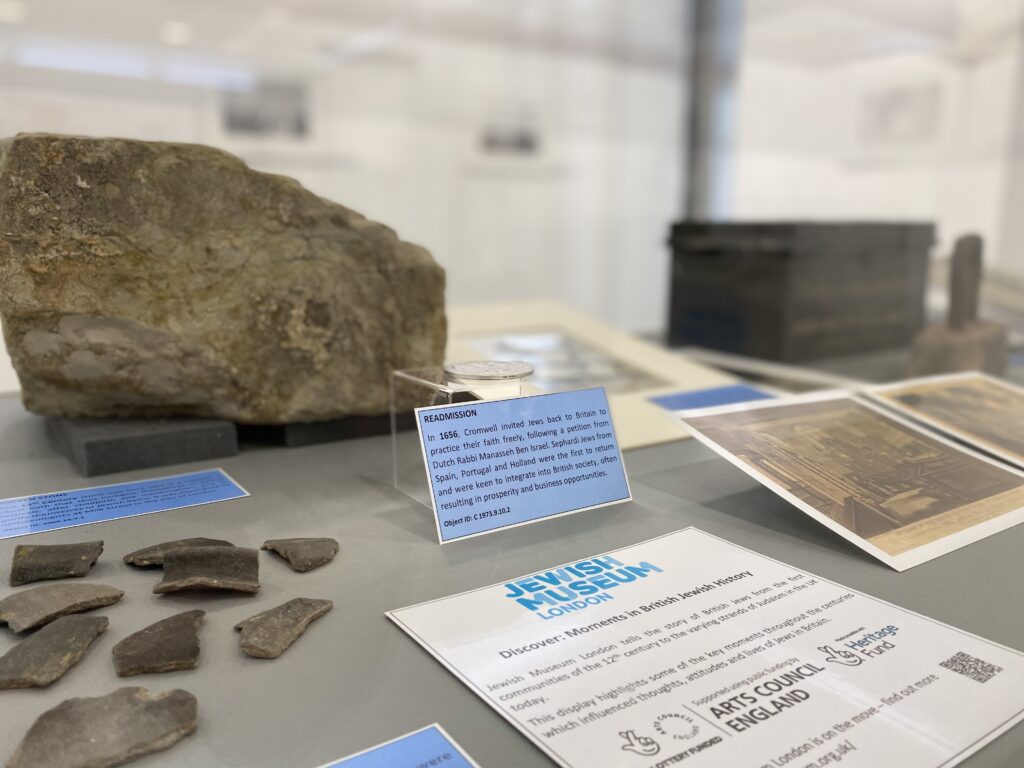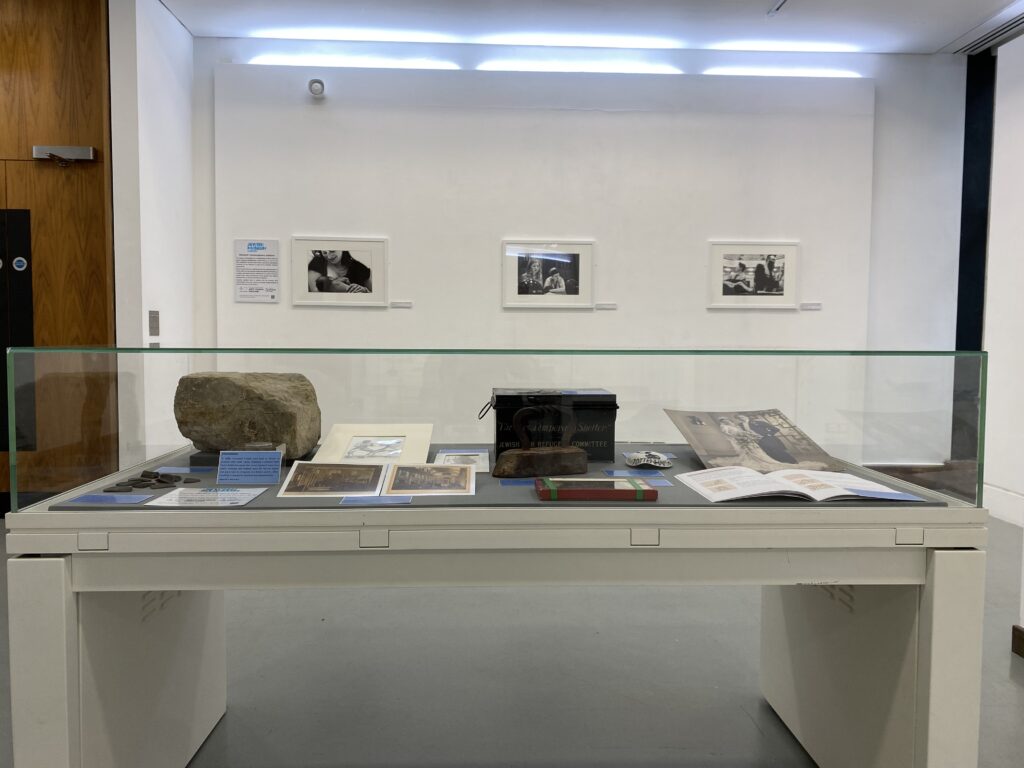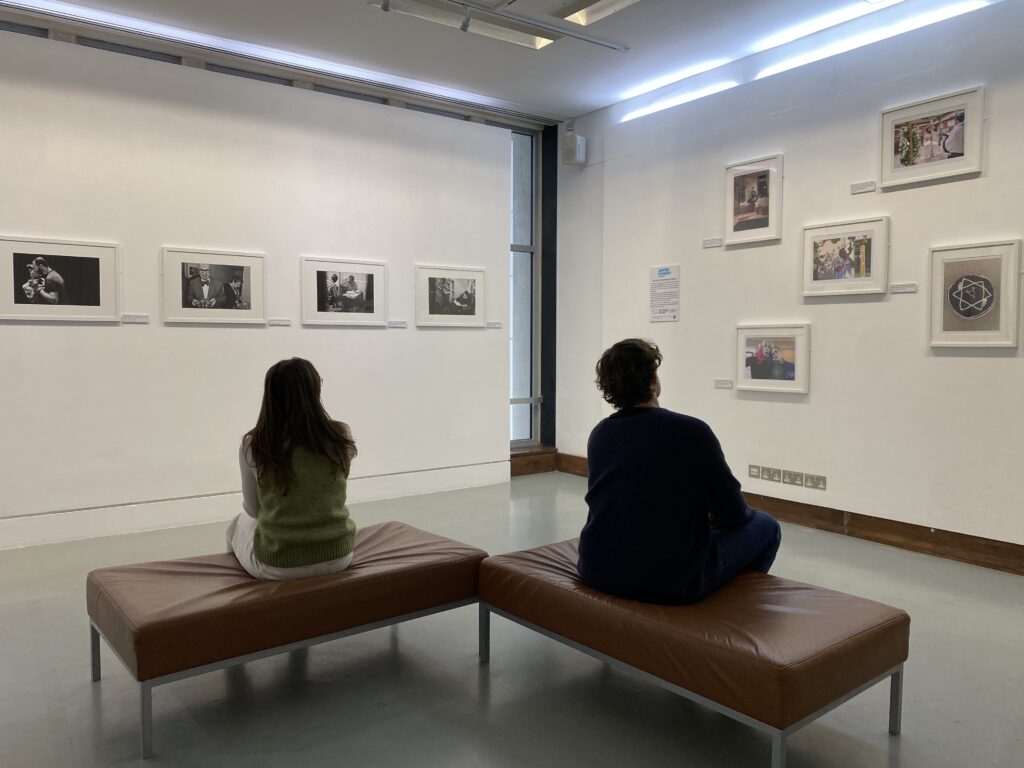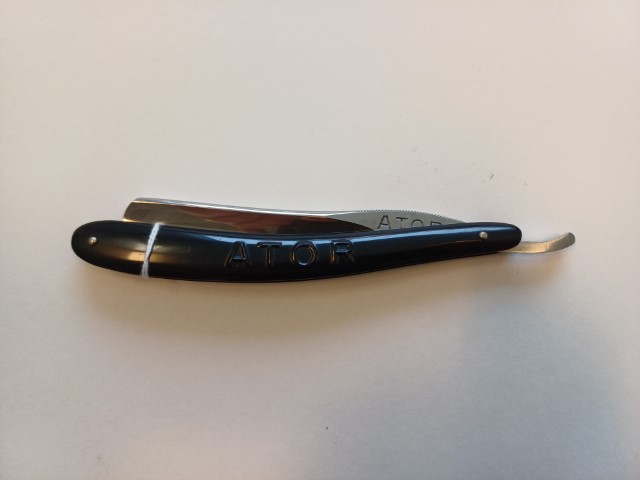Happy Accidents

I probably shouldn’t be telling you this…
We’ve recently opened our new exhibition at Swiss Cottage Library which includes almost 50 items from Jewish Museum London’s collection. Spread out amongst 3 display cases and with framed works on the walls, you can see objects that are over 700 years old, personal possessions with poignant stories, and beautiful portraits celebrating the vast diversity within the Jewish community.
Last week, having readjusted the final captions for the umpteenth time, triple checked we’d locked the cases, and wiped away any lingering fingerprints from the cabinet glass, we stood back and admired our work. And we smiled.
Now, it has been known that exhibition designers, curators, conservators and the numerous others involved in major displays can spend months and often years preparing their exhibitions, with hours upon hours of thought going into the minutia of design, layouts, and object selection. Whilst, a lot of thought has gone into our Swiss Cottage Library display, here’s where I reveal some of the happy little accidents that we hadn’t fully planned, but are 100% going to pretend were intentional.
Perfect alignment
Two wonderful items you can see at Swiss Cottage this month are a 13th century Mikveh stone and the portrait of a mother and child, 37 minutes after birth. The stone was excavated by archaeologists in 2001 at Milk Street but this one didn’t actually feature in the reconstruction of the ritual bath that you may have previously seen at our Camden site. Spoiler Alert! There were actually a further four stones that didn’t fit into the reconstruction and for over a decade they had been sitting in our stores. This block has been playing the long game and has finally got its moment to be displayed.
Behind the stone hangs a black and white portrait taken by award winning photographer Judah Passow. It featured as part of his 2012 series, ‘No Place Like Home’ and it captures a beautiful moment between a mother and daughter, following the child’s birth less than an hour before. One of the many purposes of a Mikveh is the female tradition of entering the water to purify themselves after childbirth. Amazingly, when you stand back, the portrait perfectly lines up with the mikveh stone, its image reflected in the glass directly over it. A happy little design accident which we’re 100% claiming we spent months planning.

Old contemporary vs New contemporary
Swiss Cottage Library’s gallery space is blessed with lots of wall space, allowing for numerous framed works to be displayed. When preparing the display, we knew we wanted to present works from Judah Passow, but we also wanted to include our most recently acquired images from our Inclusive Judaism project. Overall, there are 18 images and having measured the space, we knew they would all fit comfortably.
The original idea was to intersperse Passow’s black and white works with the Inclusive Judaism colour photos. However, on installation day, when we started to lay things out this didn’t look quite right. Instead, we decided to hang all the Inclusive Judaism images on one wall. But this led to a problem; six images on one wall felt quite clustered when following the horizontal alignment of the Passow works. So the simple solution was to hang them in a haphazard arrangement. The result creates a visual contrast between Passow’s representation of Jewish diversity in 2011/12 and our new approach inviting the community to donate their images in 2021/22; Passow’s works beautifully capture the many strands of Judaism, but there inevitably is a common style that stems from them all being black and white, all snapped from the same lens; Inclusive Judaism images are a bit more random in style, some are formal images, some are Instagram snaps – they’re not the kind of photos that should hang in a straight line. We totally, TOTALLY, planned that happy accident.

Blind dates
Ok, I really shouldn’t be revealing this, but one of the challenges of having items in storage is that you have to rely on whatever information has been previously recorded because you can’t just nip to the store and take a look. There’s one item I took a big risk on, committing it to the display although I had no idea what state I would be finding it in when retrieving the items from storage.
The item is the barber’s razor which features in our Jewish East End case. It’s got a great story as we know who it belonged to – Joe Segal – and we know it was used in the East End. It was also good to have a branded razor, this one being the German manufacturer of razor blades, ATOR. However, a photograph of the razor had never been taken. Worst still, it barely had a description. I could have been preparing to put a rusty old piece of iron on display for all I knew! Thankfully, it’s amazing and looks brand new. So more a lucky break than a happy accident but I’m claiming I had it all planned.
